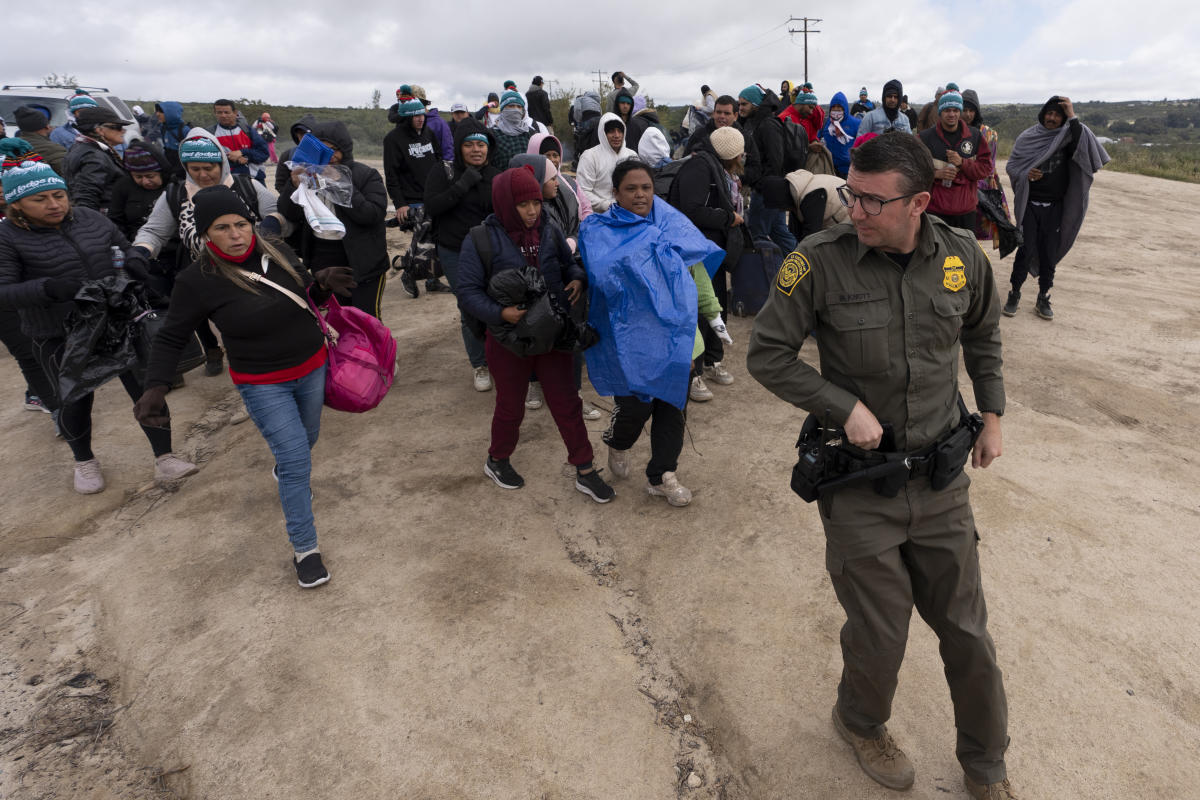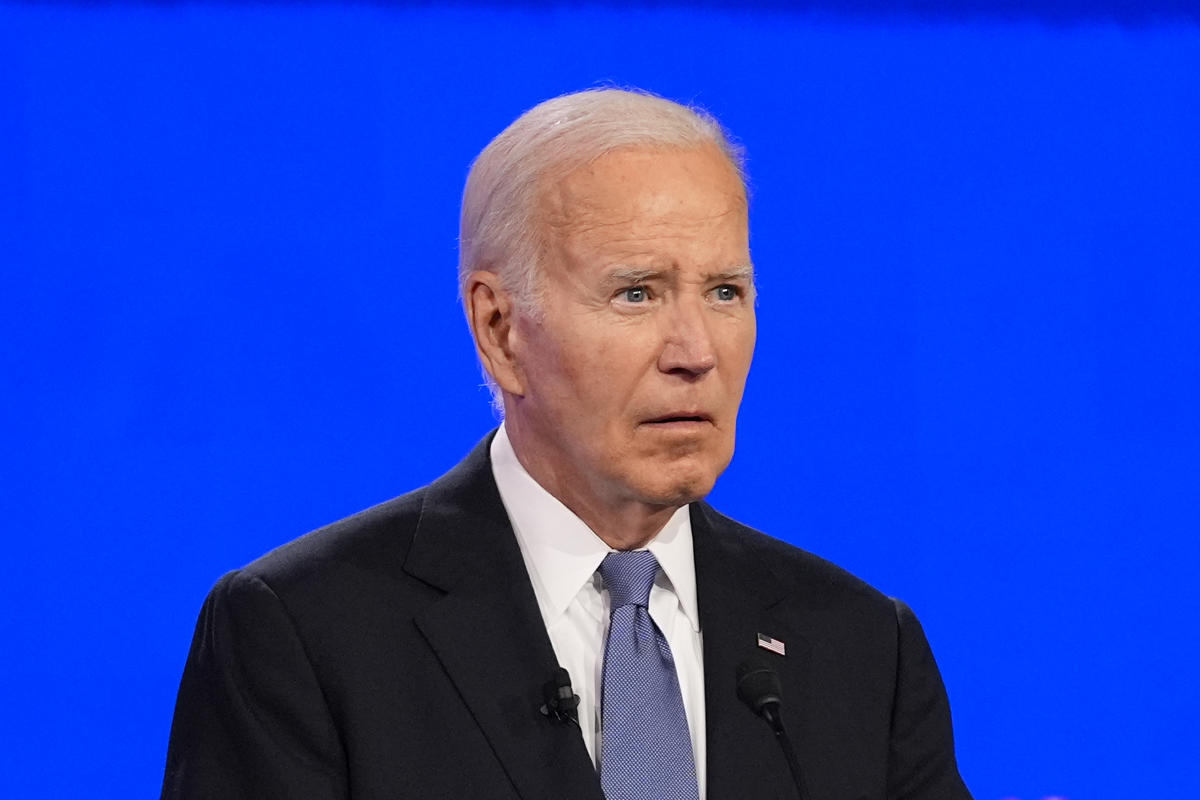SAN DIEGO (AP) — President Joe Biden on Tuesday ordered a halt to asylum processing at the U.S. border with Mexico if illegal entry reaches a threshold considered excessive.
The measure takes effect immediately because the new policy will come into effect when the number of arrests for illegal entry reaches 2,500. About 4,000 people already enter the US every day. It was a major policy shift on a crucial election-year issue that exposed Biden to Republican criticism over an unprecedented surge in entrants in an election year.
THE MEASURE
Supporters say the new measure will endanger migrants and violate international obligations to provide safe haven to people whose lives are threatened. The Biden administration denies that.
Legal problems are lurking.
There are also serious questions about whether the new measure can stop large-scale immigration of migrants. Mexico has agreed to take back migrants who are not Mexican, but only in limited numbers. And the Biden administration does not have the money and diplomatic support it needs to deport migrants over long distances, for example to China and countries in Africa.
Many who seek asylum today are free to live and work in the United States as their claims slowly wind through overwhelmed immigration courts.
Some questions and answers about Biden’s presidential proclamation:
HOW WILL THIS play out on the ground?
The threshold will result in a halt to asylum policy until the average number of daily arrests for illegal crossings falls below 1,500 for a week. The last time crossings were this low was around the height of the COVID-19 pandemic, in July 2020.
The pandemic-related asylum restrictions, known as Title 42, had no legal effect and encouraged repeated attempts. Now, migrants will face deportation orders even if they are denied the opportunity to seek asylum. That will expose them to criminal prosecution if they try again and ban them from entering the country for a number of years. It’s an important difference.
Migrants who express fear for their safety if deported will be screened by U.S. asylum officials, but under a higher standard than what is currently in place. If they succeed, they can continue to pursue other forms of humanitarian protection, including those enshrined in the UN Convention against Torture.
Unaccompanied children are exempt, raising the possibility of some parents sending their sons and daughters across the border without them.
WHAT ROLE DOES MEXICO PLAY?
A critical one.
The US has limited funding to fly people to more than 100 countries, including many in Africa and Asia. It also lacks diplomatic clout and logistical arrangements to deport large numbers to many countries, including China, Russia and Venezuela.
A 1997 court order generally limits the detention of families with a child under 18 to 20 days, a highly ambitious and perhaps unrealistic lead time to screen people who express fear of deportation and then put them on a flight.
Even for singles, U.S. Immigration and Customs Enforcement has enough resources to detain only about 34,000 people at a time.
Mexico has agreed to bring back 30,000 people a month from Cuba, Haiti, Nicaragua and Venezuela in addition to Mexicans. Its commitment does not extend to other nationalities.
This year, Mexico has also made it much more difficult for migrants to reach the U.S. border, largely by preventing them from riding freight trains and stopping them on buses to take them to southern Mexico. While Mexican authorities block the flow of migrants, relatively few are deported, leaving many stuck in Mexican cities far from the U.S. border.
Alicia Bárcena, Mexico’s foreign minister, told reporters last month that Mexico will allow no more than 4,000 illegal entries per day. Newly elected President Claudia Sheinbaum, who takes office on October 1, is expected to continue the policies of her mentor and Mexico’s current president, Andrés Manuel López Obrador.
HAS THIS BEEN TRIED BEFORE?
This is the latest in a series of measures under the Biden and Trump administrations to deter asylum seekers, but none have had lasting effects.
In May 2023, Biden imposed similar asylum barriers on anyone crossing the border illegally after passing through another country, such as Mexico. A federal appeals court allowed these restrictions to remain in place while advocates challenged them, but it appears to have had little impact.
Illegal border crossings fell after last year’s restrictions came into effect, but the lull was short-lived as the number of screening agents was inadequate for the enormous task. The application of the rule to only a small percentage of arrests showed how budgets can fail to match ambitions.
Biden invoked a section of the Immigration and Nationality Act that allows the president to ban entry of groups of people if their presence would be “adverse to the interests of the United States.” President Donald Trump used these powers to ban the entry of people from some predominantly Muslim countries, although advocacy groups are expected to argue that Biden has not met that “harmful” criterion.







